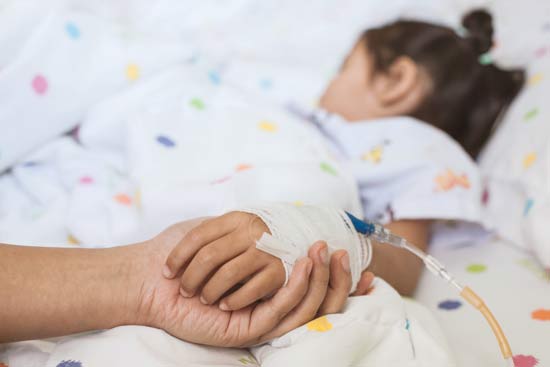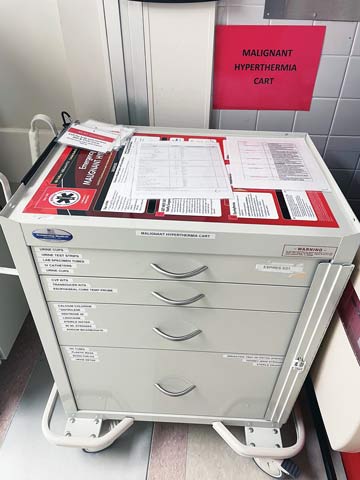Emergence delirium, which is classified as an abnormal mental state during the transition from unconsciousness to complete wakefulness that develops as a result of anesthesia administration, is quite common in pediatric patients. Children
in the midst of a bout of post-op delirium roll around and thrash, can be inconsolable and usually cannot register what’s being said to them. There’s no gold standard for treating post-op delirium, but giving a small propofol
bolus can help manage the condition. Dexmedetomidine has been administered before emergence — doses range from 0.5 mcg/kg to 1 mcg/kg — with good preventative effect.
Assessing a child’s pain and discomfort following surgery can be very challenging based on their developmental level and age. If they can talk, ask them to rate their pain level on a scale of one to 10. It might be more effective to
use the Wong-Baker FACES Pain Rating Scale, which lets children self-assess their discomfort by pointing to a facial expression that matches how they’re feeling. If a patient is an infant or nonverbal, check their vital signs for
an indication of their pain level. For example, a baby whose heart rate or blood pressure goes up during surgery is probably having a normal physiological response to pain, so you know to administer medication to help reduce it.
If a child wakes up from surgery in significant pain, you can administer morphine, fentanyl, ibuprofen or acetaminophen. Dilaudid can be used to control pain in teenage patients. Regional blocks placed during surgery are also effective ways
to manage post-op pain. It’s standard practice at pediatric hospitals to administer regional anesthesia after patients are anesthetized to avoid having to manage their fears and questions during what’s likely to be a frightening
and confusing procedure. As with all aspects of pediatric care, we explain the risks and benefits of regional anesthesia to parents or legal guardians, and only perform blocks if it is appropriate and we receive consent.
Kids should be assessed for PONV risks with a pediatric assessment tool because triggers in children are different than in adults. In adults, the female gender, history of PONV, non-smoking status and opioid use increase the risk of PONV.
In kids, gender doesn’t impact the risk, secondhand smoke exposure doesn’t matter, opioid use is generally not an issue, and they are often undergoing surgery for the first time and therefore don’t have a history of PONV.
Additionally, the chemoreceptor trigger zone (the vomiting center in the brain) isn’t fully formed or functional in children younger than two years old, so they’re typically not at increased risk of PONV. Instead, ask parents
if their child gets carsick or queasy on amusement park rides. Also ask parents if they or direct relatives have had any issues with anesthesia.
Surgical case types such as eye muscle surgery, procedures involving insufflation of the abdomen and surgeries lasting longer than 45 minutes can trigger PONV. To prevent the risk in pediatric patients, who often don’t drink enough fluids
at home, administer IV fluids before surgery to ensure they are adequately hydrated. Dexamethasone and ondansetron can also be administered before surgery. If children still wake up feeling nauseous in recovery, administering an antihistamine
can help calm their stomach.
.svg?sfvrsn=be606e78_3)



.svg?sfvrsn=56b2f850_5)